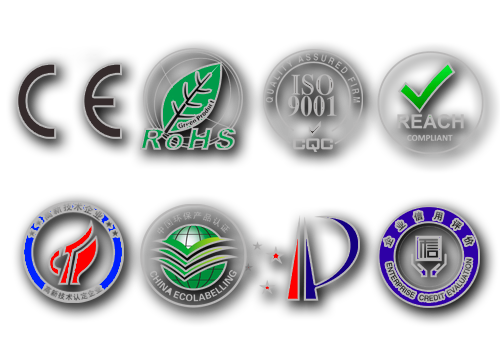How to choose the right Ultra-High Efficiency Air Filter (ULPA)?
How to choose the right Ultra-High Efficiency Air Filter (ULPA)?Choosing the right ultra-high efficiency air filter (ULPA) requires a combination of factors to consider, the following are some suggestions:Filtration efficiency Determine the required filtration accuracy: The filtration accuracy of the ULPA filter is generally 0.1-0.2 microns, and the filtration efficiency of 0.12 micron particles can be as high as 99.999% or more. If the application scenario requires very high air cleanliness, such as the lithography workshop of chip manufacturing, it is necessary to choose the ULPA filter with higher filtration efficiency to ensure that almost all small impurities can be intercepted. Check the relevant certification standards: such as the EN1822 standard, you can understand the specific filtration efficiency level of the filter under different particle sizes, common U15, U16, U17, etc., the higher the grade, the better the filtration effect. Application scenario Clean rooms and ultra-clean laboratories: In these places, the number and size of particles in the air need to be strictly controlled to avoid interference with experiments or production. ULPA filters with high filtration efficiency, low resistance, and low dust content should be selected to meet their demanding requirements for air quality. Electronic chip manufacturing: In the process of chip manufacturing, tiny dust particles may cause defects in the chip circuit, so it is necessary to select ULPA filters that can effectively filter extremely small particles to ensure the cleanliness of the production environment and the quality and performance of the chip. Biopharmaceutical and medical fields: such as sterile operating rooms, drug dispensing rooms, etc., need to prevent bacteria, viruses, and other microorganisms and small particles of pollution. ULPA filters must not only have efficient filtration performance but also meet the relevant health standards and certifications to ensure that they do not release harmful substances or have adverse effects on medicines and the human body. Airflow and resistance Select according to the air volume requirements of the equipment or system: different application scenarios and equipment have different airflow requirements, such as large dust-free workshops may require a large airflow to maintain the circulation and cleanliness of the air, while small ultra-clean worktables require relatively small flow. When selecting a ULPA filter, ensure that its rated air volume can meet the needs of practical applications to avoid poor purification effects due to insufficient air volume or energy waste due to excessive air volume. Consider the resistance of the filter: the lower the resistance, the lower the energy consumption of the fan, and the operating costs are correspondingly reduced. In general, high-quality ULPA filters maintain low resistance while ensuring high filtration efficiency, thereby improving the energy efficiency of the entire air purification system. In the selection, you can refer to the product specification of the filter, understand its initial resistance and final resistance and other parameters, and choose the appropriate resistance of the product. Dimensions and mounting methods Measuring the mounting space: Accurately measure the size of the space where the filter is installed to ensure that the selected ULPA filter fits perfectly. Common ULPA filter sizes include 32032050mm, 48448450mm, 61061050mm, and other specifications. Select the appropriate size according to the actual space to avoid installation failure or affect the sealing of the system due to size differences. Choose the right installation method: There are many ways to install ULPA filters, such as flange installation, slot installation, etc. According to the installation location and the structural characteristics of the system, the installation method is easy to install, disassemble, and maintain to ensure that the filter can be firmly installed in the system, and the seal is good to prevent air leakage. Material and quality Filter material quality: The filter material of ULPA filter is usually made of ultra-fine glass fiber filter paper and other efficient filter materials, such as the United States HV ultra-fine glass fiber filter paper, whose fiber is fine and uniform, which can provide better filtration effect and lower resistance. When choosing, we should pay attention to the brand, origin, and quality certification information of the filter material to ensure the reliable performance of the filter material. Outer frame material: Outer frame material generally has an aluminum profile frame, aluminum plate folding frame, galvanized frame, stainless steel frame, etc. Different materials have different strength, corrosion resistance, and weight characteristics. According to the requirements of the application environment, choose the appropriate frame material, such as in a humid or corrosive environment, should choose a stainless steel frame or anti-corrosion treatment of aluminum frame, etc., to ensure the service life of the filter. Overall quality and reliability: Select products with well-known brands and good reputations, check the quality certification and testing reports of the products, and understand their performance and reliability in practical applications. In addition, you can also refer to other users' use evaluations and cases to select ULPA filters with stable quality and reliable performance. Maintenance costs and service life Service life: The service life of ULPA filters is generally long, but the specific service life will be affected by the use of the environment, air quality, operating time, and other factors. To understand the estimated service life of the filter, and to reasonably arrange maintenance and replacement plans, you can generally refer to the product manual or consult the manufacturer. Maintenance cost: including filter replacement cost, cleaning cost, etc. ULPA filters are generally not cleanable, so it is necessary to consider their replacement costs and choose a reasonable price and cost-effective product. At the same time, it is also necessary to consider the labor cost and downtime required to replace the filter and try to choose products with low maintenance costs. |

 German
German French
French Italian
Italian Portuguese
Portuguese Japanese
Japanese Korrean
Korrean Russian
Russian




